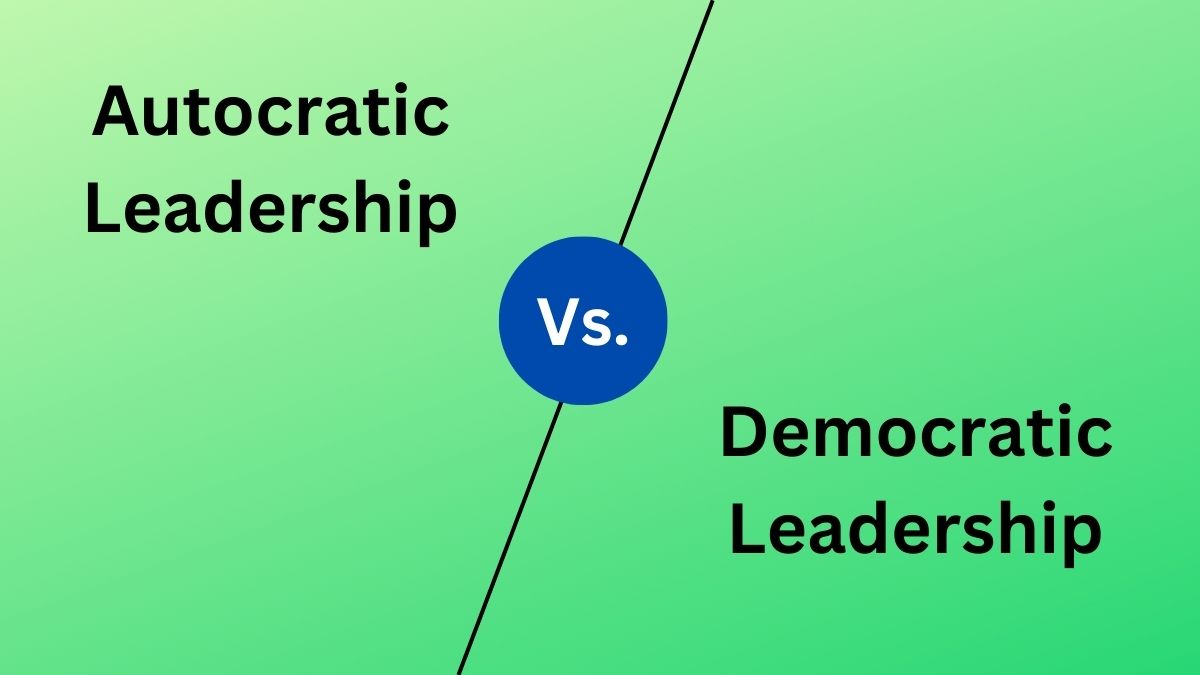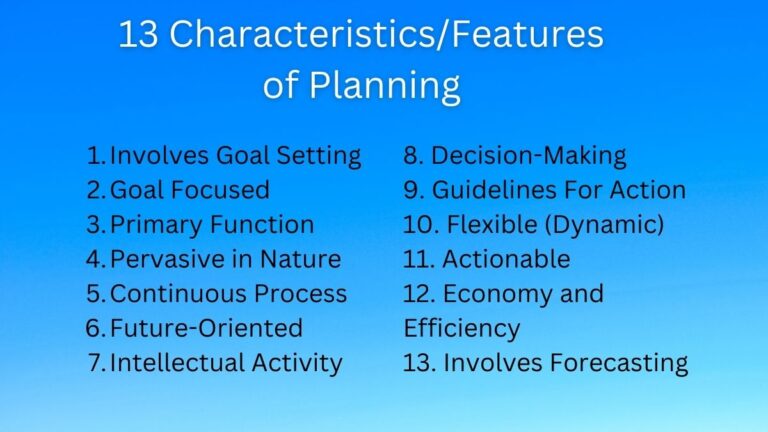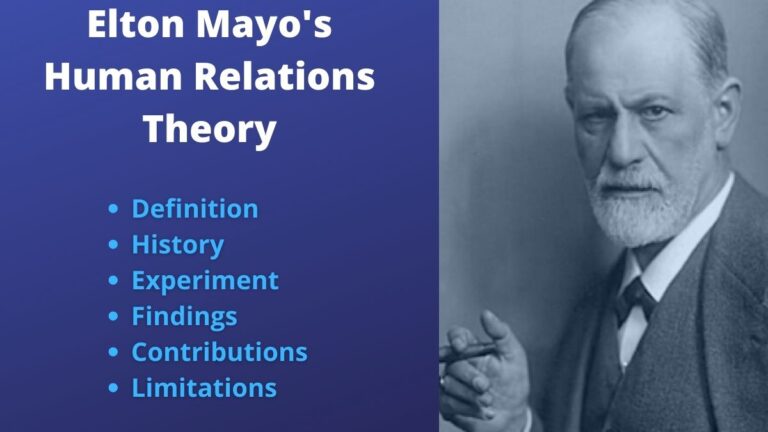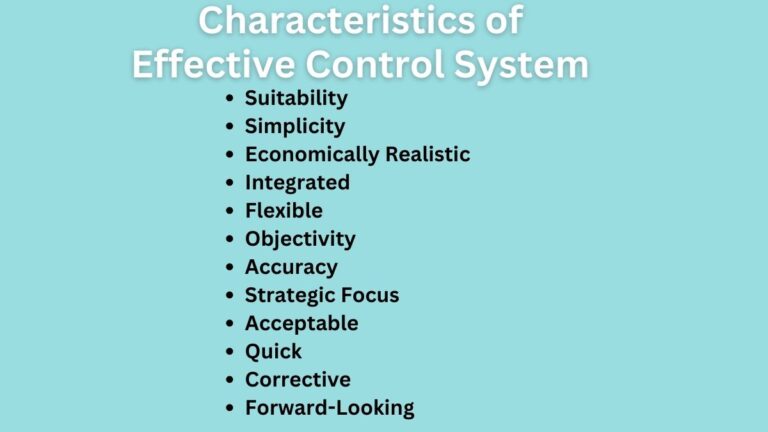Autocratic Vs. Democratic Leadership: 10 Key Differences [Explained]
Autocratic and Democratic Leadership
Autocratic and democratic leadership are two types of leadership based on authority. Both exercise the right to make decisions in the business setting. Where autocratic leadership exercises the sole authority to make decisions. Whereas, democratic leadership includes subordinates or employees while making decisions.
In autocratic leadership, the top leader or manager enjoys the sole authority to make decisions on all matters of the business. And, in democratic leadership, leaders encourage employee participation in the decision-making process.
One thing that is common in these leaderships is that both have an objective to ensure the achievement of organizational goals. And, the difference between them is that they follow different techniques and means to achieve that.
Let’s discuss, autocratic leadership, and democratic leadership, and the differences between them.
What is Autocratic Leadership?
Autocratic leadership is also called authoritarian leadership, in which the top leader holds all the right to make decisions, he even makes them without consulting with the subordinates. In this style of leadership, the decision-making power is centralized on the top level or to very few people.
In the autocratic style of leadership, employees’ considerations have no value in setting company decisions, goals, and policies. Here, autocratic leaders rarely take input from their subordinates.
An autocratic leader enjoys full authority and is responsible for the performance of the organization. He guides and commands the employees. And, employees are supposed to accept orders or commands unquestionably.
Related: Pros and Cons of Autocratic Leadership
What is Democratic Leadership?
Democratic leadership, also called participative leadership, in which employee participation is encouraged while making decisions in the workplace. Here, the suggestions and opinions of employees are valued in organizational settings.
In the democratic style of leadership, leaders consider the importance of employees’ ideas, opinions, and suggestions. They believe employees further enhance the quality of decisions when it is made with them.
Democratic leadership practices two-way communication and employees are given freedom of expression and independent thinking. It is a more human leadership style than an autocratic style and tends to create deeper employee motivation.
Difference Between Autocratic Leadership and Democratic Leadership
The following are the points that are worth notable to differentiate between the democratic and autocratic styles of leadership.
Definition
Autocratic leadership is defined as a leadership style where the decision-making power is centered on only the top leader.
And, democratic leadership is defined as a leadership style where leaders make decisions through consultation with their followers.
Related: Styles of Leadership
Employee Domination
In autocratic leadership, the views, ideas, and opinions of employees are dominated. Whereas, in democratic leadership, the views and ideas of subordinates are respected.
Motivation
In autocratic leadership, leaders usually exercise strict and negative motivation tools. As such in this leadership style, there seems low employee morale and motivation.
On the other side, in democratic leadership, leaders usually follow less strict and positive motivation tools, as such, here employees are highly motivated.
Communication
In autocratic leadership, there is a one-way communication system as such the relationship between the leader and follower is not healthy. Conversely, in democratic leadership, leaders follow two-way communication and there seems a healthy and stronger leader-follower relationship.
Decision-Making Speed
In autocratic leadership, since an individual leader makes the decision, the decision’s making process is quick, and prompt decisions can be made. Whereas in democratic leadership, since employees also participate, the decision-making process is time-consuming, as such, a prompt decision can not be made.
Conflict in Decision
In autocratic leadership, since a leader makes decisions without consulting his followers, there is no chance of conflict between the leader and followers or subordinates.
Whereas, in democratic leadership, there may be a conflict between subordinates and leaders as subordinates are involved while making decisions.
Secrecy
Since confidential information of the organization rests with the individual, in autocratic leadership, secrecy can be maintained. Conversely, as in democratic leadership, the information needs to be shared so maintaining secrecy is difficult.
Utilization of Employee Potential
In an autocratic organization, the full potential of employees and their creative ideas can not be utilized. On the other hand, in democratic leadership, because of the structure of participation and increased motivation of employees, full potential can be utilized for organizational purposes.
Employee Satisfaction
In autocratic leadership, since it is a strict, hard, and fast rules structure there is low employee satisfaction. Whereas, in democratic leadership, a high level of employee satisfaction can be maintained.
Suitability
The autocratic leadership style is suitable when,
- When the subordinates are inexperienced, lack proper training and knowledge, unable to understand organizational goals.
- When different organizational projects require strong leadership.
- When the company approves fear and punishment as accepted disciplinary techniques.
- When the leader is highly competent in decision-making.
Whereas, the democratic style of leadership is suitable when,
- When subordinates are highly competent, experienced, and motivated.
- When leaders have a fair mind and prefer participation in decision-making.
- When the organization has made its objectives transparent to the employees.
- When reward and involvement are used as the primary means of motivation and control.
Read Next: Laissez-faire Leadership Style
Sajan Kushmi is a content writer with more than 4 years of experience. He holds BIM Degree. He write on the topics related to Management, Marketing, and Entrepreneurship.






